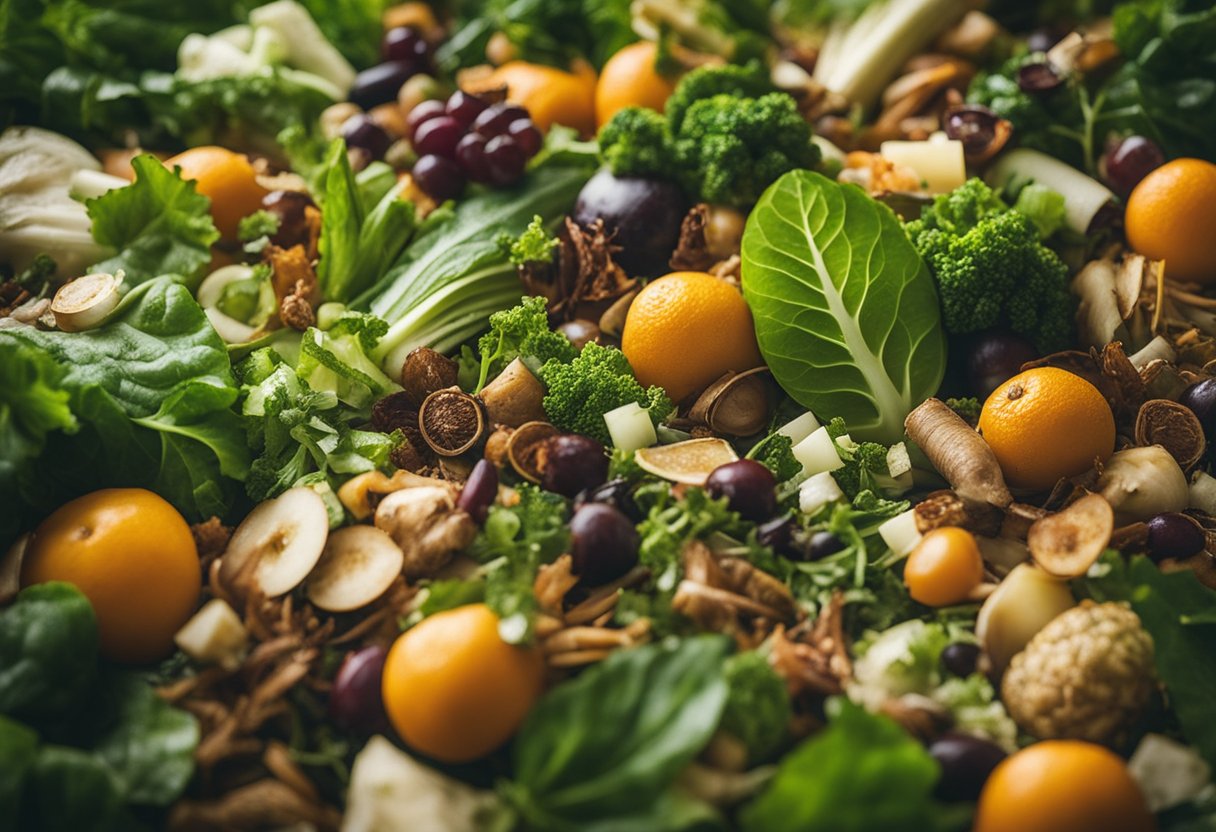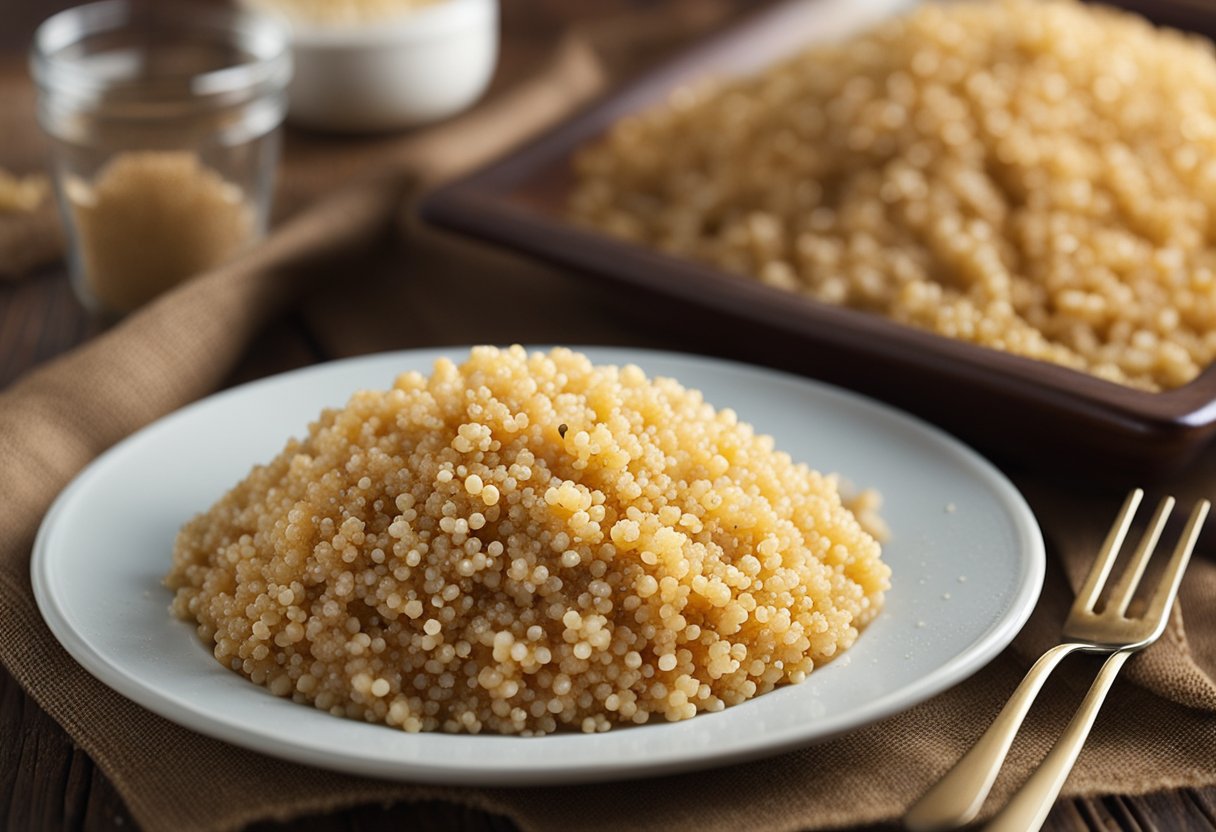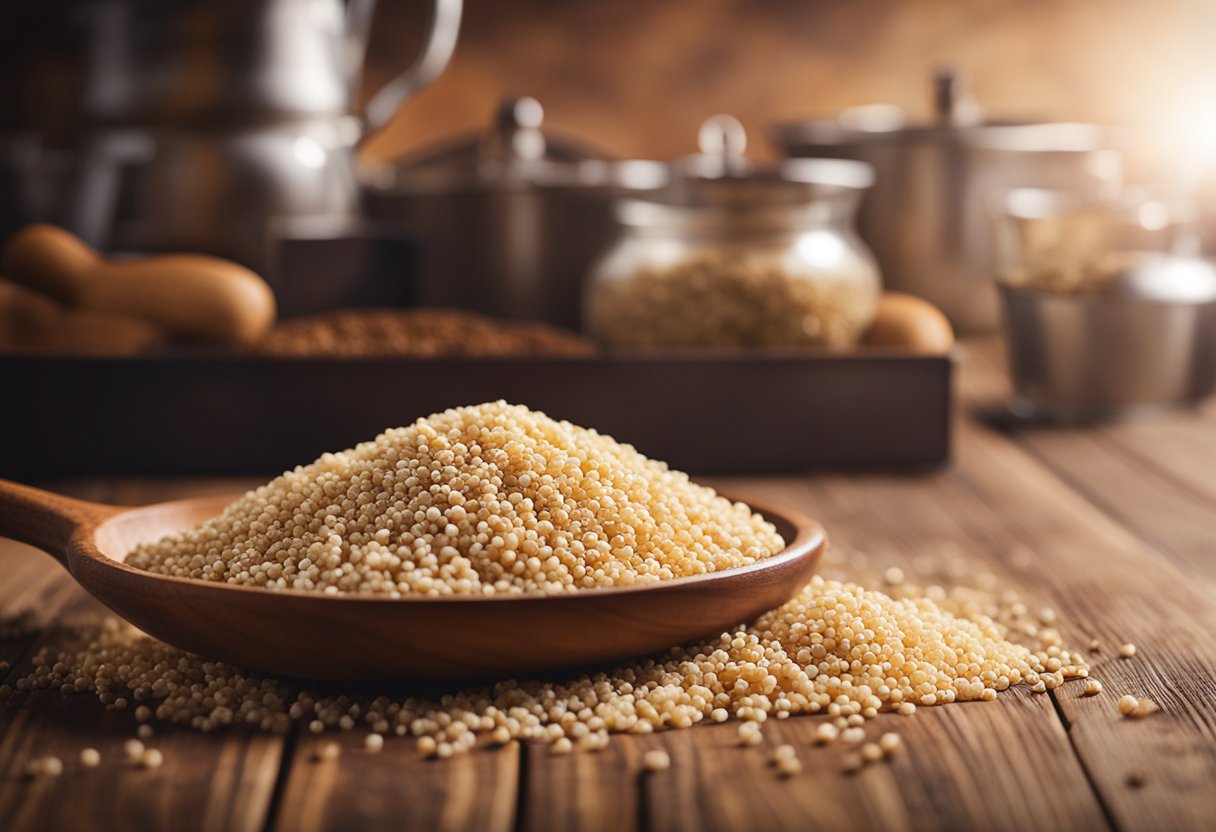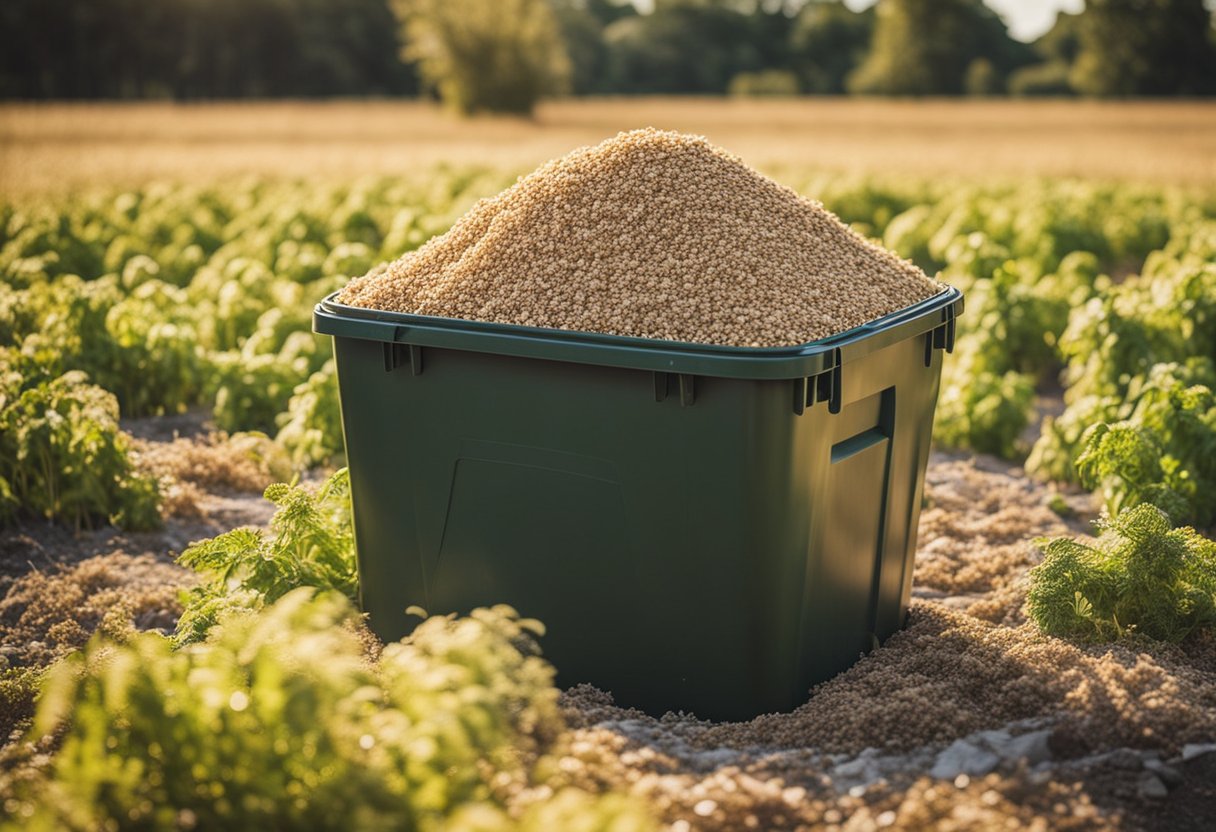As an Amazon Associate I earn from qualifying purchases.
At A Glance
Yes, you can compost quinoa. Quinoa is an organic material that will decompose over time in a compost pile. It falls under the category of “green” compost material, providing the necessary nitrogen to help break down “brown” materials like leaves and twigs. It’s advisable to mix quinoa well within the compost pile to ensure efficient decomposition and to prevent it from clumping together, which could create a barrier to air and moisture, essential elements for successful composting.
Composting is an excellent way to reduce waste and improve soil health. It’s a natural process that transforms organic waste into nutrient-rich soil that can be used to grow plants. However, not all waste is suitable for composting. One question that often comes up is whether quinoa can be composted.

The good news is that quinoa can be composted, both cooked and uncooked. However, there are a few things to keep in mind. Cooked quinoa is fine to compost as long as it hasn’t been mixed with other ingredients not suitable for composting, such as meat and dairy. Uncooked quinoa is also suitable for composting, but it should be soaked before adding it to the compost pile. It’s also important to mix quinoa with other materials for quick breakdown and maintain a balanced mixture of green and brown matter.
What is Quinoa

Quinoa is a gluten-free, high protein, and nutrient-rich superfood that has gained popularity in recent years. It is a plant native to South America and is a member of the amaranth family. The scientific name for quinoa is Chenopodium quinoa.
The edible seeds of the quinoa plant are the part that is commonly consumed. These seeds are small and round, with a slightly bitter taste. Quinoa seeds come in different colors, including white, red, and black.
Quinoa is an excellent source of vitamins and minerals. It contains significant amounts of magnesium, phosphorus, and folate, among other nutrients. Additionally, quinoa is rich in antioxidants, which can help protect against cell damage caused by free radicals.
Due to its high protein content, quinoa is a popular food for vegetarians and vegans. It is also a good option for people who are trying to reduce their meat consumption. Quinoa is a complete protein, meaning that it contains all nine essential amino acids that the body needs to function properly.
In summary, quinoa is a nutritious and versatile food that is easy to incorporate into a healthy diet. Its unique combination of nutrients makes it an excellent choice for anyone looking to improve their overall health and wellbeing.
Can You Compost Quinoa

As an avid gardener, I am always looking for ways to create nutrient-rich soil for my plants. Composting is an excellent way to do this, and I often wonder if I can compost quinoa. The answer is yes, you can compost quinoa.
Quinoa is a great addition to your compost pile because it is high in protein and contains essential nutrients. However, before adding quinoa to your compost pile, it is important to note that cooked quinoa is more suitable for composting than uncooked quinoa. Uncooked quinoa contains saponins, which can lead to foul odor and slow down the decomposition process.
If you are adding cooked quinoa to your compost pile, make sure that it hasn’t been mixed with other ingredients not suitable for composting, such as meat and dairy. You can also mix quinoa with other organic materials, such as vegetable scraps, leaves, and grass clippings, to create a balanced compost pile.
If you are composting quinoa, it is important to keep the compost pile moist and aerated. This will help speed up the decomposition process and prevent foul odors from forming. You can also consider using a hot composting method, which involves creating a compost pile that heats up to high temperatures, to speed up the decomposition process even further.
In conclusion, quinoa is an excellent addition to your compost pile, as long as it is cooked and mixed with other organic materials. Composting quinoa can help you create nutrient-rich soil for your plants and reduce waste in your backyard.
How to Compost Quinoa

Composting quinoa is a great way to reduce food waste and create nutrient-rich soil for your plants. Here are some steps to follow when composting quinoa:
- Add quinoa to your compost pile: Quinoa can be added to your compost pile as brown materials, which are high in carbon. Make sure to balance it with green materials, which are high in nitrogen, for optimal composting.
- Maintain moisture: Keep your compost pile moist, but not too wet. If your compost pile is too dry, add water to it. If it is too wet, add brown materials to balance it out.
- Monitor temperature: The ideal temperature for composting is between 120 and 160 degrees Fahrenheit. Make sure to turn your compost pile regularly to keep it aerated and at the right temperature.
- Add organic matter: Quinoa is a great source of organic matter for your compost pile. Organic matter helps to feed microorganisms and break down the compost faster.
- Balance with browns: Quinoa is considered a green material, so make sure to balance it out with brown materials, which are high in carbon. Brown materials include things like dried leaves, straw, and wood chips.
- Soak quinoa before adding: To help break down quinoa faster, soak it in water for a few hours before adding it to your compost pile.
- Add food waste: Quinoa can be added to your compost pile along with other food waste, such as vegetable scraps and fruit peels.
Remember to keep your compost pile aerated to ensure proper decomposition. If you are using an airtight container, make sure to open it regularly to allow for air circulation. By following these steps, you can successfully compost quinoa and create nutrient-rich soil for your plants.
What Not to Compost
As much as composting is an environmentally friendly and sustainable practice, there are certain items that should never be added to your compost pile. These items can contaminate the compost and even pose a threat to your health and the environment.
One of the most important things to avoid composting is meat, including chicken, fish, and bones. Not only do they take much longer to break down, but they also attract unwanted pests and can cause unpleasant odors. Similarly, dairy products should also be kept out of the compost pile, as they can attract rodents and other unwanted animals.
Another thing to avoid composting is oil, including nut butters, sauces, and salad dressings. These items can create a layer of grease that prevents oxygen from reaching the compost, slowing down the decomposition process.
Cat litter is another item that should not be composted. While it may seem like a good idea to use cat litter for composting, it can contain harmful bacteria and parasites that can be harmful to humans and animals.
Overall, it’s important to be mindful of what you add to your compost pile. By avoiding these items, you can ensure that your compost is safe, healthy, and effective.
Benefits of Composting Quinoa
Composting quinoa is a great way to reduce waste and create nutrient-rich soil. Quinoa is rich in nitrogen and essential nutrients, making it a great addition to compost. When added to compost, quinoa helps to provide the necessary nutrients for plants to grow and thrive.
Composting is an environmentally friendly way to dispose of food waste. By composting quinoa, we can help reduce the amount of waste that ends up in landfills. Landfills are a major contributor to climate change, as they release methane gas, which is a potent greenhouse gas. Composting helps to reduce the amount of methane gas released into the atmosphere, which can help to mitigate the effects of climate change.
In addition to reducing waste and helping the environment, composting quinoa can also benefit plant growth. Compost is an excellent source of organic material, which helps to improve soil structure and fertility. When added to soil, compost helps to retain moisture and nutrients, which can help plants grow stronger and healthier.
Overall, composting quinoa is a simple and effective way to reduce waste, benefit the environment, and promote plant growth. By composting quinoa, we can help to create a more sustainable world for ourselves and future generations.
Growing Quinoa at Home
I have found that growing quinoa at home can be a fun and rewarding experience. Quinoa plants thrive in full sun and are drought-tolerant, making them a great choice for gardeners in high-temperature areas.
To get started, I recommend planting quinoa seeds in a well-drained, loamy soil that is high in organic matter. Quinoa plants should be spaced about ½ to 2 feet apart and thinned when they have their first sets of true leaves to 6-18 inches apart.
It is important to keep the soil moist until early June, at which point drought-tolerant quinoa needs very little irrigation. After the last frost, quinoa plants will grow quickly and will require little maintenance.
If you live in a region with a shorter growing season, I recommend starting your quinoa seeds indoors about 6-8 weeks before the last frost date. Quinoa plants typically take about 90-120 days to mature and produce seeds.
When growing quinoa, it is important to fertilize the garden bed before planting. I recommend using a balanced fertilizer with equal parts nitrogen, phosphorus, and potassium.
Quinoa can be grown in USDA zones 4-10, but it is important to check your specific growing zone to ensure that you are planting at the right time. With a little patience and care, you can enjoy a bountiful harvest of quinoa seeds right from your own backyard.
Harvesting and Using Quinoa
When it comes to harvesting quinoa, timing is key. You should wait until the leaves of the plant start to turn brown, which usually happens in late August or mid-September. At this point, the seeds should give under the pressure of a fingernail. If there are multiple panicles, it’s best to harvest the upper one a week or two before the side shoots.
Once you have harvested the panicles, you need to dry them out. This can be done by spreading them out on a clean, dry surface and leaving them there for a few days. You can also dry them out in a dehydrator if you have one. Once the panicles are completely dry, you can remove the seeds by rubbing them gently with your hands.
If you want to use your quinoa to make flour, you will need to grind it up. You can do this in a food processor or a coffee grinder. Just make sure that the quinoa is completely dry before you grind it up.
When it comes to watering your quinoa, it’s important to keep the soil moist but not waterlogged. During the summer months, you may need to water your plants more frequently to keep the soil from drying out. However, you should avoid over-watering, as this can lead to root rot.
In summary, harvesting and using quinoa is a straightforward process. Wait until the leaves start to turn brown before harvesting the panicles, and dry them out before removing the seeds. If you want to make flour, grind up the seeds once they are completely dry. Finally, make sure to keep the soil moist but not waterlogged during the summer months.
Troubleshooting Quinoa Growth
I have grown quinoa successfully several times, but sometimes I have encountered some issues. Here are some troubleshooting tips for common problems you might encounter when growing quinoa.
Diseases
Quinoa is generally a hardy plant that is resistant to most diseases. However, it can be susceptible to fungal diseases such as downy mildew. Downy mildew appears as yellow spots on the leaves, which eventually turn brown and die. To prevent downy mildew, avoid planting quinoa in areas with poor air circulation and excessively wet soil. You can also apply a fungicide if necessary.
Insects
Quinoa can attract a variety of insects, including aphids, flea beetles, and leaf miners. Aphids are small, pear-shaped insects that suck sap from the leaves. Flea beetles are small, black or brown beetles that chew small holes in the leaves. Leaf miners are small, fly larvae that tunnel through the leaves. To control these insects, you can use insecticidal soap or neem oil. You can also attract beneficial insects such as ladybugs and lacewings, which will feed on aphids and other pests.
Soil
Quinoa prefers well-draining soil that is rich in organic matter. If your soil is heavy or clay-like, you may need to amend it with compost or other organic matter to improve drainage. Quinoa also prefers a slightly acidic soil pH of around 6.0 to 7.0. If your soil is too alkaline, you can add sulfur or other soil acidifiers to lower the pH.
Water
Quinoa is a drought-tolerant plant, but it still needs adequate water to grow properly. If you live in an area with low rainfall, you may need to water your quinoa regularly. However, be careful not to overwater, as quinoa does not like to sit in wet soil. Water deeply and infrequently, allowing the soil to dry out slightly between waterings.
Overall, quinoa is a relatively easy crop to grow, but it can still encounter some problems. By following these troubleshooting tips, you can help ensure a healthy quinoa crop.
Frequently Asked Questions
As quinoa gains popularity as a healthy food choice, many people are wondering if it is suitable for composting. Here are some frequently asked questions about composting quinoa.
Can I compost quinoa?
Yes, you can compost quinoa. Quinoa is rich in nitrogen and essential nutrients, making it a great addition to compost. Soak cooked quinoa before adding it to compost and mix it well with other materials for quick breakdown. To ensure proper decomposition, maintain a balanced mixture of green and brown matter, turn compost frequently, and avoid meat, bones, and dairy products. 1
Can I compost quinoa with the worm bin?
Yes, you can add quinoa to your worm compost bin. Worms love soft and mushy food such as quinoa and rice. If your quinoa has any sauce on it, you can simply rinse it off before you put it in the worm bin. However, avoid adding any meats, dairy, or oils to the quinoa when cooking. 2
Can I grow quinoa using compost?
Yes, you can grow quinoa using compost. Quinoa grows best in sandy, loamy soil with a little addition of well-cured organic compost matter. Make sure your soil drains well and has a pH of 6 to 8.5. Measure soil with a pH tester if needed. Soil should have a moderate salinity content as well. 3
What should I avoid when composting quinoa?
When composting quinoa, avoid adding any meats, bones, dairy products, oils, and other animal products. These items can attract pests and slow down the decomposition process. 1
How long does it take for quinoa to decompose in compost?
Quinoa can take anywhere from a few weeks to several months to decompose in compost, depending on the conditions. To speed up the decomposition process, maintain a balanced mixture of green and brown matter, turn compost frequently, and keep the compost moist but not wet. 1
Can I use quinoa compost for my garden?
Yes, you can use quinoa compost for your garden. Quinoa compost is rich in nitrogen and other essential nutrients, making it an excellent fertilizer for plants. However, avoid using fresh quinoa compost, as it can burn your plants. Instead, let the compost cure for a few weeks before using it. 1
Can I use quinoa compost for indoor plants?
Yes, you can use quinoa compost for indoor plants. Quinoa compost is rich in nutrients and beneficial microorganisms, making it an excellent fertilizer for indoor plants. However, avoid using fresh quinoa compost, as it can be too strong for indoor plants. Instead, let the compost cure for a few weeks before using it. 1
Can I use quinoa compost for seedlings?
Yes, you can use quinoa compost for seedlings. Quinoa compost is rich in nutrients and beneficial microorganisms, making it an excellent fertilizer for seedlings. However, avoid using fresh quinoa compost, as it can be too strong for young plants. Instead, let the compost cure for a few weeks before using it. 1
Can I add quinoa to my compost tea?
Yes, you can add quinoa to your compost tea. Quinoa is rich in nutrients, making it an excellent addition to compost tea. However, avoid adding any meats, bones, dairy products, oils, and other animal products. These items can attract pests and slow down the decomposition process. 1
Can I add quinoa to my vermicompost tea?
Yes, you can add quinoa to your vermicompost tea. Quinoa is rich in nutrients, making it an excellent addition to vermicompost tea. However, avoid adding any meats, bones, dairy products, oils, and other animal products. These items can attract pests and slow down the decomposition process. 2
